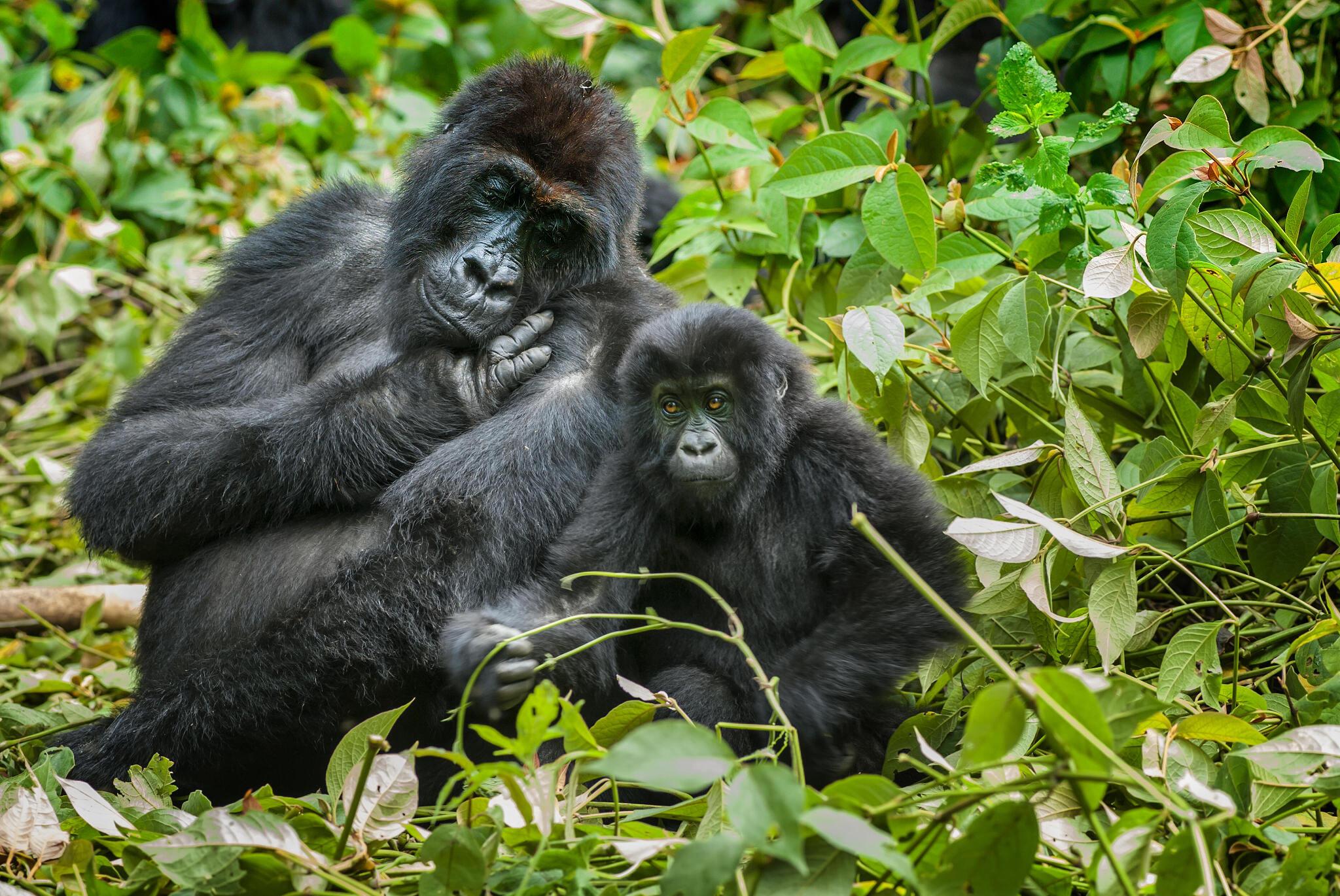
Gorillas, the largest living primates, inhabit central and east Africa. They thrive in intricate social structures displaying behavior and emotions similar to humans, such as laughter and sadness. However, their survival is in danger due to factors like poaching, diseases, and habitat loss.
Organizations like the WWF are actively focusing on establishing new protected zones to ensure the well-being and flourishing of the gorilla population. Let us understand more about this big and muscular animal.
Size
The gorilla is indeed the largest of all primates. When we compare different species and sexes, the disparities in body heights and weights are quite significant.
Here is a brief comparison:
-
Western Lowland Gorillas
- Adult male body length: 1.7 m (66.9 in.)
- Adult male weight: about 169.5 kg (374 lbs.)
- Adult female body length: 1.5 m (59.1 in.)
- Adult female weight: about 71.5 kg (158 lbs.)
-
Mountain Gorillas
- Adult male weight: up to 220 kg (484 lbs.)
- Adult female weight: about 97.7 kg (215 lbs.)
-
Cross River Gorillas
- Estimated adult male weight: about 180 kg (396 lbs.)
- Eastern Lowland Gorillas
- Adult male weight: up to 220 kg (484 lbs.)
- Adult female weight: about 80 kg (176 lbs.)
These differences highlight the immense size variations among gorilla species and genders.
Shape
Gorillas have larger stomachs than chests due to their enlarged intestines, which aid in digesting the bulky fibrous vegetation they consume.
What do they eat?
Gorillas primarily consume vegetarian diets including stems, bamboo shoots, and fruits. Western lowland gorillas supplement their diet with termites, ants, and larvae by breaking open the nests.
Do they live alone?
Gorillas form family groups with a dominant male leading the pack. These group sizes can range from a few to over 40 members.

How big do they get?
Adult male gorillas can weigh up to 440 pounds and stand at a height of six feet on two legs. Mature males, known as “silverbacks,” develop distinctive white hair on their backs at around 14 years of age.
How often do they give birth?
Female gorillas have an 8.5-month gestation period, and they provide care to their offspring for several years. With a low reproduction rate of just one baby every four to six years, gorilla populations face challenges in recovering from declines.
Are they endangered?
Both eastern and western gorillas are critically endangered, with just around 2,600 mature eastern gorillas remaining. Human activities like agriculture, mining, and poaching pose severe threats to both species, along with invasive diseases and habitat loss, contributing to their population decline.
Where do they live?
Eastern and western gorillas inhabit different regions separated by the Congo basin forest.
The eastern gorillas are found in:
- Rwanda
- Uganda
- The Republic of the Congo
While western gorillas are located in:
- Angola
- Cameroon
- Central African Republic
- The Democratic Republic of the Congo
- Equatorial Guinea
- Gabon
- Nigeria
Both species reside in forested areas, constructing nightly nests either on the ground or on trees. The mountain gorillas prefer higher elevations above 1,400 meters. Gorillas are non-territorial, with family groups coexisting in overlapping territories, showcasing their adaptability and social behavior in their respective habitats.


